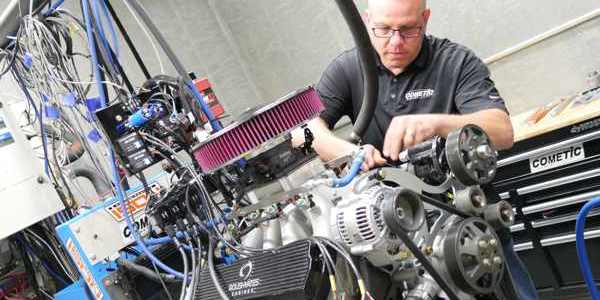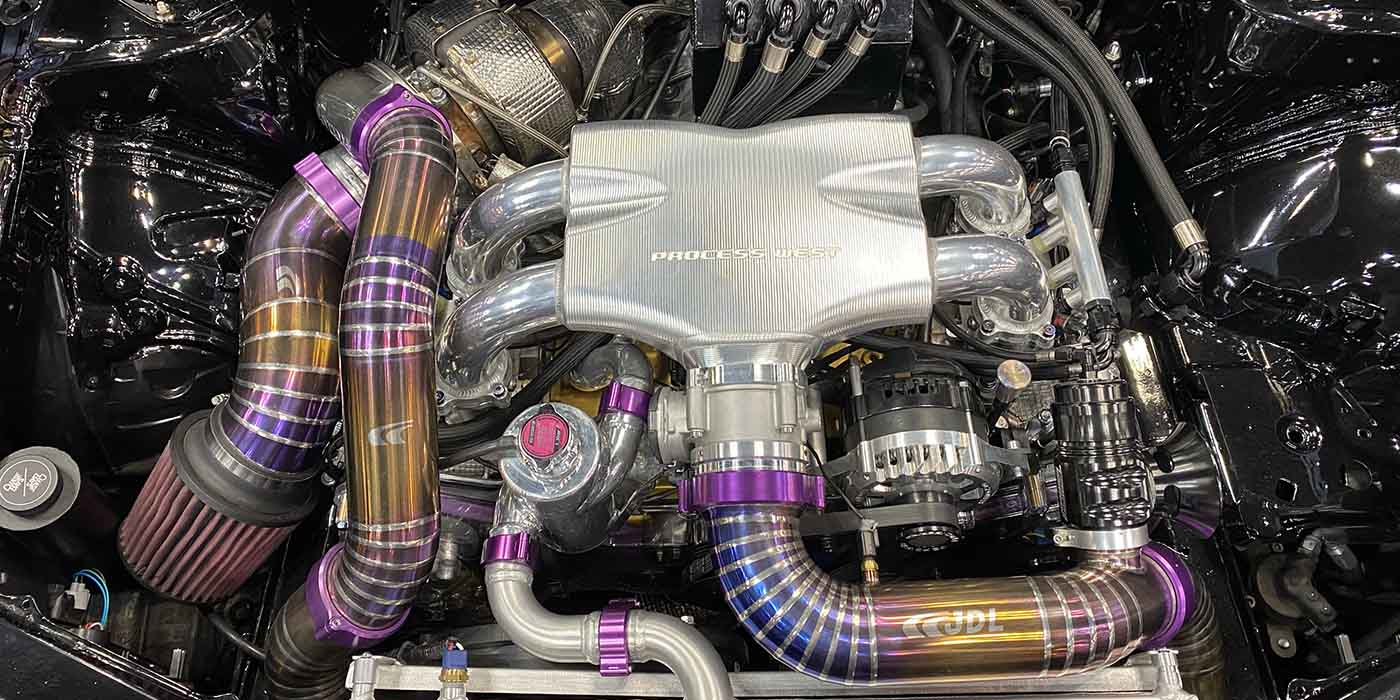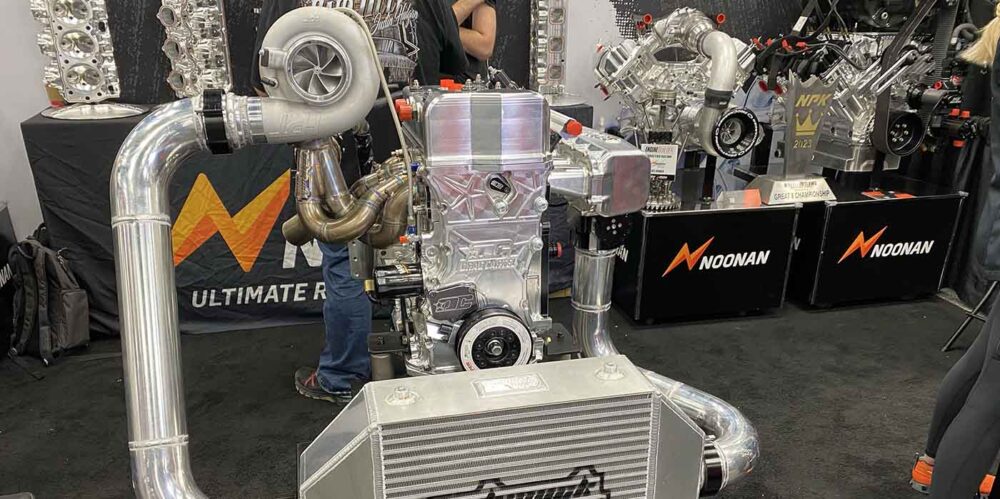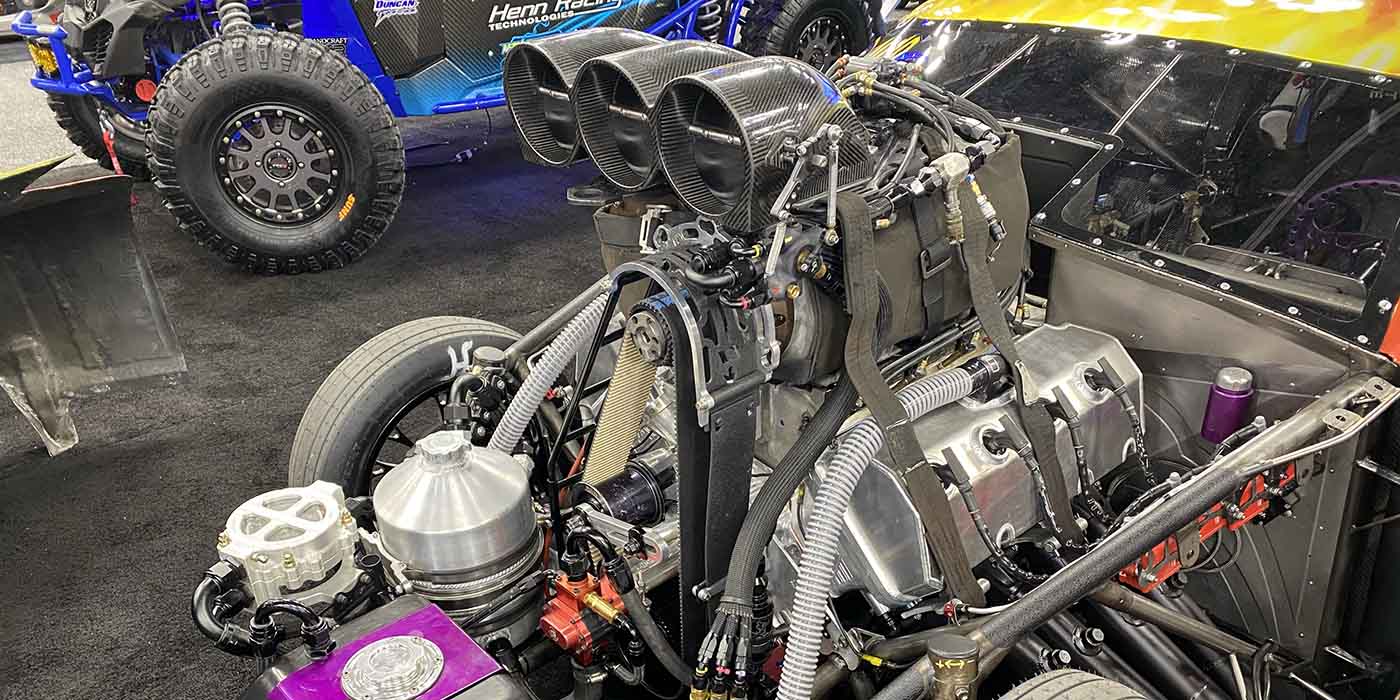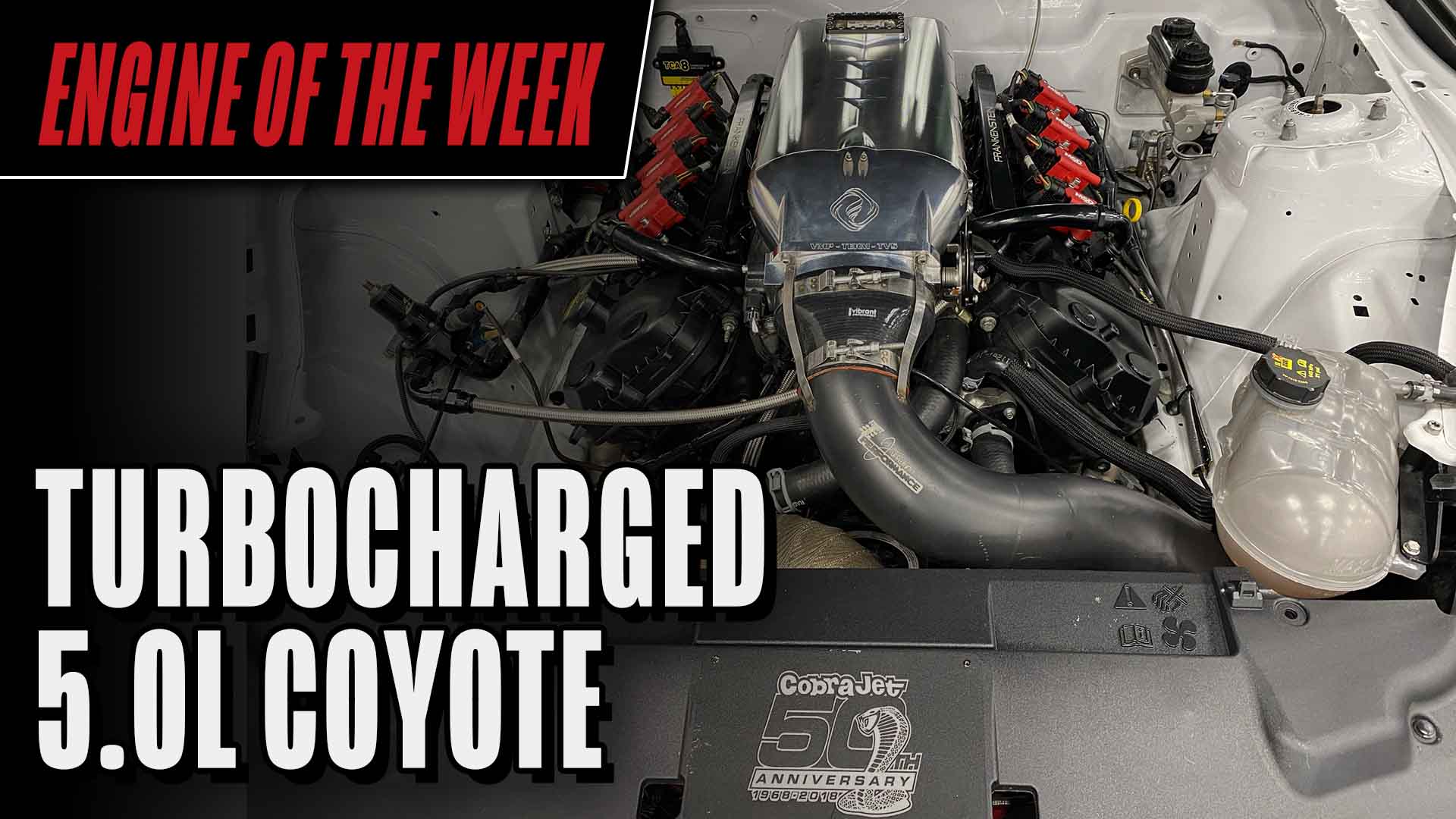Building a well-performing engine to meet specific performance parameters is a task best left to professionals. Whether it’s for the street, drag strip, road racing or marine applications, building an engine requires precision, skill and much more. However, building an engine that needs to perform well in off-road, desert environments such as the Baja 1000 is a whole other story. These engines are required to perform in environments that engines would otherwise not thrive in.
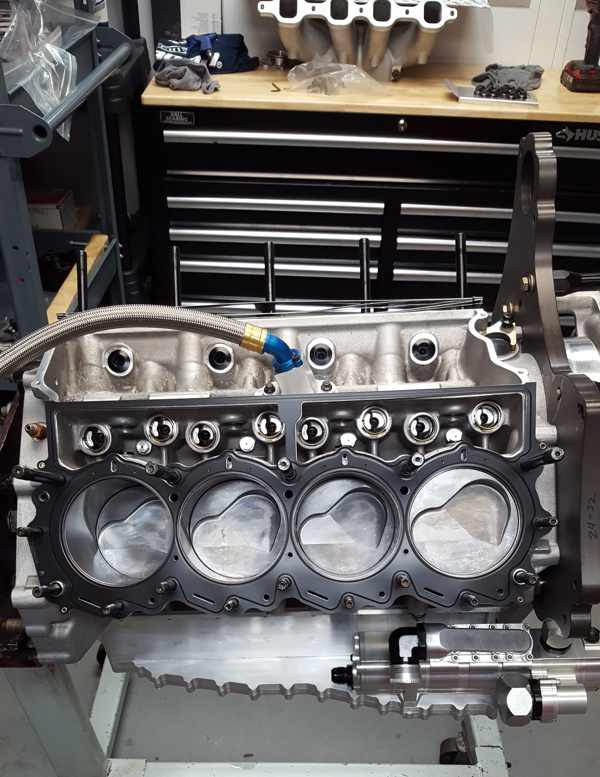
Mike Hupertz knows this all too well as the engine services manager at Ison Racing Engines in Concord, OH. The full-service machine shop, which opened its doors roughly 10 years ago, focuses primarily on grassroots type work and can do anything from automotive engines to powersports and marine engines.
Just recently, however, Ison Racing Engines was tasked with building Justin Lofton’s #41 trophy truck engine for the Baja 1000.
“His trophy truck is getting a RY45 engine,” Hupertz says. “It was designed exclusively by Roush Yates and is an aluminum, small block Ford. We changed things around because it is going into a trophy truck for desert/endurance racing. The SCORE series and Best in the Desert are the two sanctioning bodies.”
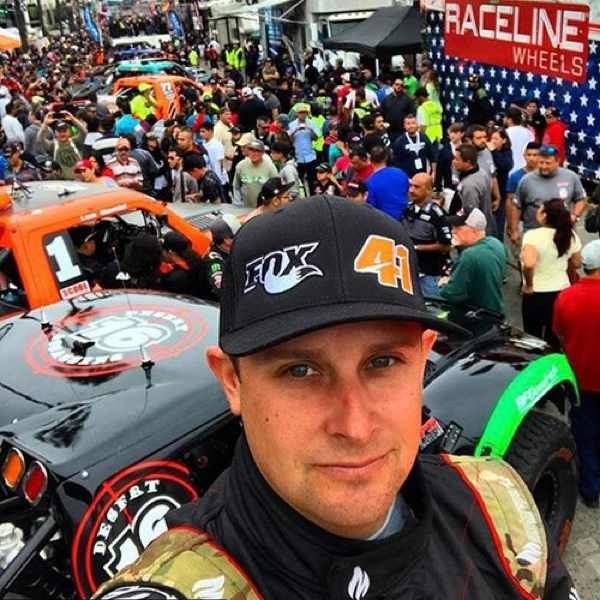
To turn the RY45 platform into something extra special, Hupertz started by squaring the block, torque plate honing it, line honing it, honing the lifter bores and other basic race block prep. The crank came balanced, and from there Hupertz was sure to measure everything up and made sure clearances were what they needed to be.
This engine has a couple different crank options — you can go with Sonny Bryant or with Callies — both are billet cranks with four-inch stroke. The block is available in a couple different bore sizes. You can go 4.150˝, which is considered the small bore version, or you can go for 4.250˝, which is considered the big bore version. Connecting rods came from CP-Carrillo. The pistons are manufactured by MAHLE Motorsports with a Total Seal ring package, and the whole engine is sealed by Cometic Gasket.
“We’re using Cometic’s MLX 4.250˝ bore RY45 gasket,” Hupertz says. “It’s a very robust gasket and life cycle between freshen ups on this particular engine is right around 1,600 miles. I think the Chevy’s are getting somewhere around 900 miles before they need freshening up. So it definitely is a strong platform and very well engineered.”
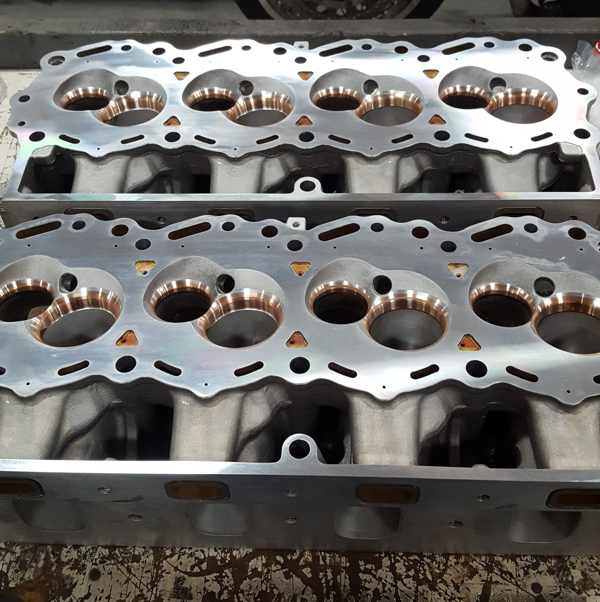
This engine in particular is fascinating simply for the fact that it’s a version of the FR9 that races every Sunday in all the Ford cars.
“Valvetrain-wise and everything like that it’s what they call frequency base,” he says. “So valve springs and everything had lots and lots of Spintron testing and engineering that went into it to figure out if these components are going to work together. It’s a pretty neat little platform.”
While the engine comes from Roush Yates with their base package components Ison Racing Engines made changes to suit the endurance in the desert world.
“I would elaborate but nobody’s done it for this engine so I don’t want to let anybody know that because it was kind of a pain in the butt to figure it out,” Hupertz says. “We did change water pump speed considerably from a dirt late-model spec to the endurance spec for the desert environment. Compression ratio needed to be adjusted as well for those long duration races. Compression is below 13.5:1.”
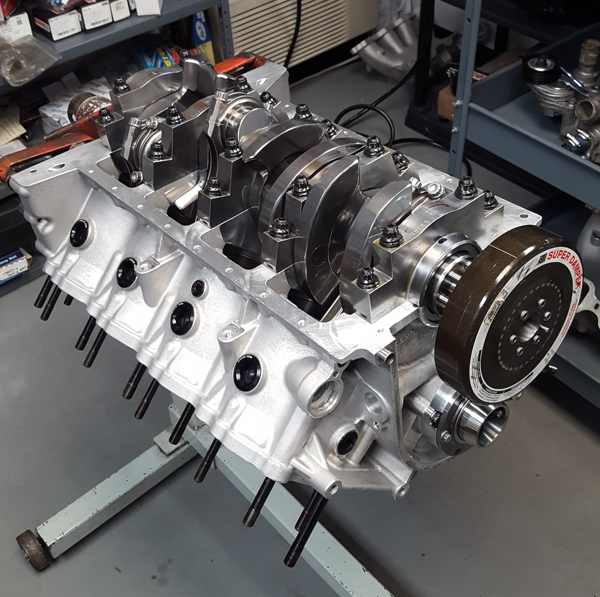
Hupertz also had to change the engine from a carbureted engine to EFI.
“We spent an exorbitant amount of time tuning the EFI on this particular platform for the environment it’s in as well,” he says. “The engine comes to you in a carbureted form with a carbureted manifold, but for the desert stuff we changed everything over and had to come up with everything it took to get it to work with fuel injection. So we spent time messing with the eight oxygen sensors in the pipes and trying to really understand the throttle position. We got a new intake manifold and we were able to source fuel injectors and rails and all the ECU.”
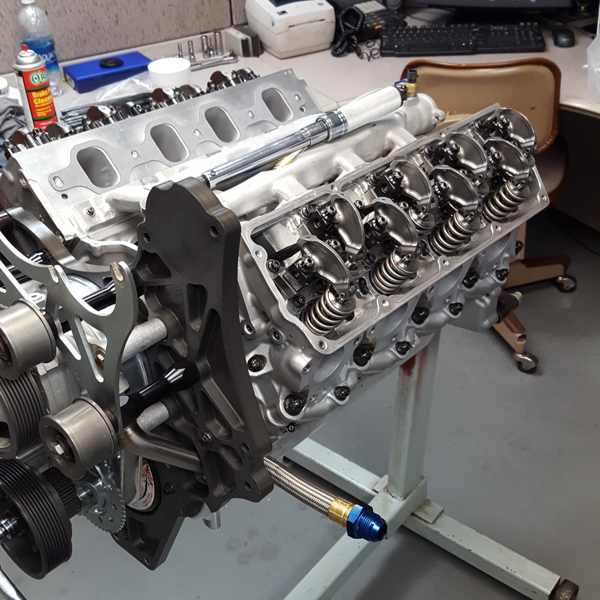
The engine management came from Holley, which Hupertz says has been a pretty good relationship for Ison.
“They’ve helped out a lot with getting things to work and being very receptive to changing things that we needed to have changed and working with their engineers. Robin Lawrence has been pivotal in getting that software to work in that environment with the input from us.”
Aside from the EFI, Hupertz says that building the engine itself wasn’t so much a challenge. The challenge was figuring out the platform that it was going in.
“Basically this engine was engineered along a dirt late-model short course environment,” he says. “The desert off-road trophy truck environment is altogether different. So we had some learning curve to figure out a few things. But we’re looking forward to the Baja 1000.”
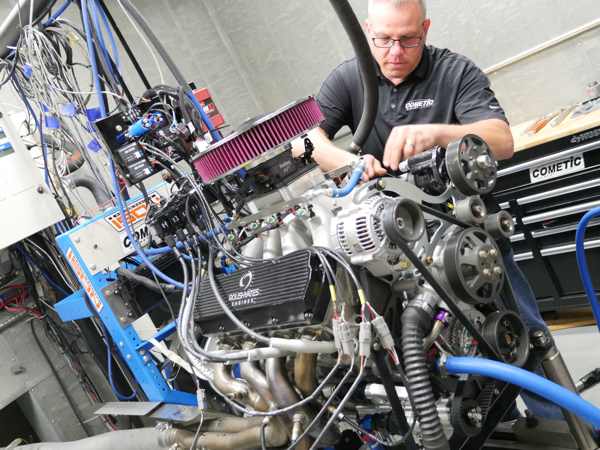
Since this project was a slight departure from the standard engine work Hupertz does at Ison, the RY45 trophy truck engine was a pretty exciting adventure. However, Hupertz says having to rebuild one engine between races is getting stressful.
“We’re currently working on getting him a second engine so we can get two in rotation to where you’re not so under the gun,” he says. “After races, the engine always comes back. It always gets looked at and checked out. So it will be nice to have two in rotation to where we have a little bit more time between races.”
The second engine would be similar, but Hupertz says they may try some different things as far as the induction system on it and camshafts.
“There are some options out there and in camshaft profiles I’d like to do a little bit more R&D on to see if we can find something that would suit the truck and the transmission that’s in the truck a little bit better.”
Currently, the engine makes, in EFI form, 840-plus hp at 8,000 rpm, and the torque is 650-plus lb.-ft. at 6,500 rpm.
“The valvetrain on this particular engine is pretty unbelievable since this is what the cup guys run,” Hupertz says. “There’s no lash adjusters, it’s all shimmed, and there’s solid rocker blocks. It’s a really neat setup. Not a lot of people get to see inside those engines and it’s a work of art for sure.”
Engine of the Week is sponsored by Cometic Gasket
To see one of your engines highlighted in this special feature and newsletter, please email Engine Builder managing editor, Greg Jones at [email protected]
Make sure you vote for your favorite engine, and you could win cash or prizes.

